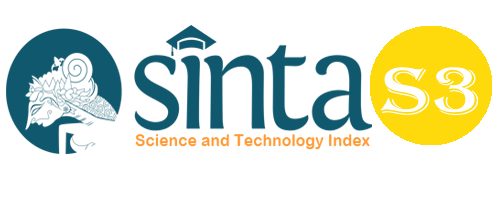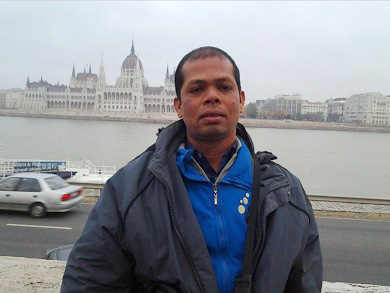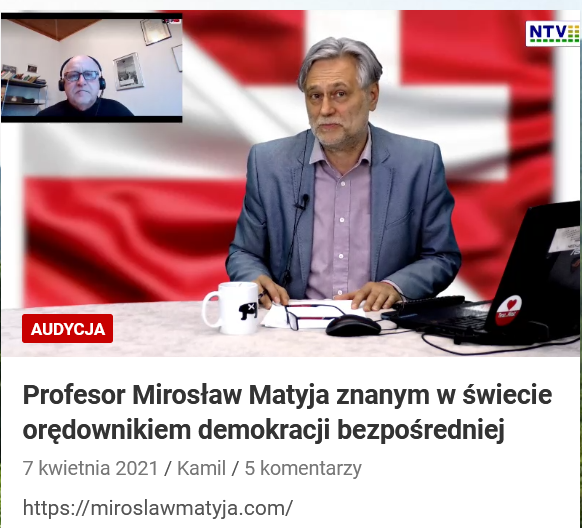Adaptation Model of Women Head of Poor Family Facing the Covid-19 Pandemic to Achieving SDGs
Abstract
This study aimed to formulate a model and analyze the efforts of women heads of low-income families in dealing with the COVID-19 pandemic. The real impact that occurs, especially for women heads of low-income families, is the decline in the household economy, gender vulnerabilities such as limited accessibility, the inability to maintain legal identity, especially for divorced women, a large number of dependents, and the loss of the work they have been working. The question of this research is how the models and efforts of women heads of low-income families adapt to the COVID-19 pandemic. The research method uses a mixed-method, with a locus of Surakarta city, the number of informants interviewed by women heads of low-income families is 41 people, carried out by observation, in-depth interviews, and focus group discussions. The results showed that most of the female heads of poor households could adapt by changing their livelihoods, strengthening and mobilizing family members, making changes to their diet, and increasing social piety. The social environment and local government also support adaptation. The gender cross-cutting approach found issues related to community empowerment, women's empowerment and child protection, and small and medium business cooperatives.
Keywords
Full Text:
PDFReferences
Berita Statistik. (2020). BPS. bps.go.id
BPS. (2017). Konsep dan Definisi 4 (1st ed.). BPS.
BPS. (2020). KEMISKINAN MAKRO INDONESIA. bps.go.id
Carastathis, A. (2014). The concept of intersectionality in feminist theory. In Philosophy Compass (Vol. 9, Issue 5, pp. 304–314). Wiley-Blackwell Publishing. https://doi.org/10.1111/phc3.12129
Conceição, P., & United Nations Development Programme. (n.d.). Human development report 2019 : beyond income, beyond averages, beyond today: inequalities in human development in the 21st century.
Daly, M. (2005). Gender mainstreaming in theory and practice. Social Politics, 12(3), 433–450. https://doi.org/10.1093/sp/jxi023
Flowers, N. A. N. C. Y. (2000). The Human Right s Educat ion Handbook Ef f ec t iv e Pr ac t ic es f o r Lear ning , (Nancy Flowers, Ed.; 1st ed.). Human Rights Resource Center, University of Minnesota. http://hrlibrary.umn.edu/edumat/pdf/hreh.pdf
Fusch, P., Fusch, G. E., & Ness, L. R. (2018). Denzin’s Paradigm Shift: Revisiting Triangulation in Qualitative Research. Journal of Social Change, 10(1). https://doi.org/10.5590/josc.2018.10.1.02
Haughton, J., & Khandker, S. R. (2009). Handbook on Poverty and Inequality (1st ed.). Library of Congress Cataloging-in-Publication Data. https://doi.org/10.1596/978-0-8213-7613-3
Kabeer, N. (2003). Gender Mainstreaming in Poverty Eradication and the Millennium Development Goals A handbook for policy-makers and other stakeholders Naila Kabeer. CIDA. https://www.idrc.ca/en/book/mainstreaming-poverty-eradication-and-millenium-development-goals-handbook-policy-makers-and
Klasen, S., Lechtenfeld, T., & Povel, F. (2011). What about the Women? Female Headship, Poverty and Vulnerability in Thailand and Vietnam.
Lincoln, N. K. D. Y. S. (2013). Qualitatif Research. In 日本畜産学会報 (Vol. 84, pp. 487–492). http://ir.obihiro.ac.jp/dspace/handle/10322/3933
Masrizal. (2011). Mixed Method Research. Jurnal Kesehatan Masyarakat, 6(Metodologi), 53–56.
Mora, A. M. (2020). COVID-19 in Women ’ s Lives : (1).
Olena Hankivsky. (2012). An Intersectionality-Based Policy Analysis Framework. www.sfu.ca/iirp
Rense Nieuwenhuis .Tereza Munji . Jorg Neugschwender Palmisano. Heba Omar. Flaviana. (2019). GENDER EQUALITY AND POVERTY ARE INTRINSICALLY LINKED. https://www.unwomen.org/-/media/headquarters/attachments/sections/library/publications/2018/discussion-paper-gender-equality-and-poverty-are-intrinsically-linked-en.pdf?la=en&vs=4100
Sachs, Jeffrey. (2005). The end of poverty : economic possibilities for our time. Penguin Press.
Shala, A. (2020). The Reation Between Sosio-ecinomic Status (SES) and Early. March. https://doi.org/10.12803/SJSECO.51011
Suryahadi, A., al Izzati, R., & Suryadarma, D. (2020). The Impact of COVID-19 Outbreak on Poverty: An Estimation for Indonesia (Draft). In SMERU Working Paper: Vol. April. http://smeru.or.id/en/content/impact-covid-19-outbreak-poverty-estimation-indonesia
UN Women. (2020). WOMEN AND SUSTAINABLE DEVELOPMENT GOALS.
World Bank. (n.d.). Ending Poverty, Investing in Opportunity Contents.
Yeasmin, S., & Rahman.K.F. (2012). ’ Triangulation ’ Research Method as the Tool of Social Science Research. Bup Journal, 1(1), 154–163. http://www.bup.edu.bd/journal/154-163.pdf
Yulaswati Tim Penulis, V., Fitrinika Dwi Rahayuningsih Ely Dinayanti Fisca Miswari Aulia Maudytia Rismalasari Muhammad Hafid Raditia Wahyu Riski Raisa Putra Vidya Kartika Widaryatmo, E. H., & Bidang Kependudukan dan Ketenagakerjaan Kementerian PPN, K. (n.d.). Analisis Wilayah dengan Kemiskinan Tinggi. www.bappenas.go.id
Zulminarni, D. (2014). Menguak Keberadaan dan Kehidupan Perempuan Kepala keluarga (Asep Suryahadi, Ed.; 1st ed.). Lembaga Penelitian SMERU. https://www.smeru.or.id/sites/default/files/publication/buku-1.pdf
DOI: https://doi.org/10.33258/birci.v5i3.6801
Article Metrics
Abstract view : 84 timesPDF - 16 times
Refbacks
- There are currently no refbacks.

This work is licensed under a Creative Commons Attribution-ShareAlike 4.0 International License.

This work is licensed under a Creative Commons Attribution-ShareAlike 4.0 International License.

_.gif)

















_.gif)



